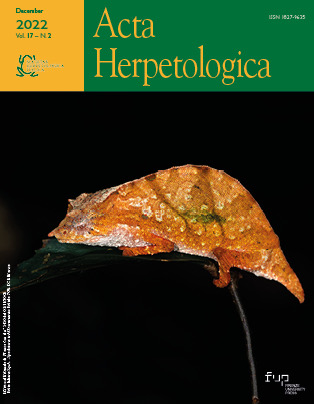Cryptic diversity in pygmy chameleons (Chamaeleonidae: Rhampholeon) of the Eastern Arc Mountains of Tanzania, with description of six new species
Published 2022-11-02
Keywords
- Afromontane,
- biodiversity,
- East Africa,
- chameleons,
- new species
- reptiles ...More
How to Cite
Abstract
Previous molecular phylogenetic studies of pygmy chameleons have identified several cases of undescribed cryptic diversity of species, some of which have remained undescribed due to a lack of morphological information. Here, we combine descriptive morphology with principal component analysis, to quantify the overall morphological variation, and phylogenetic analysis to describe six new species of Rhampholeon from the Eastern Arc Mountains, including populations found in the Udzungwa, Rubeho, Nguru, Ukaguru, and Nguu Mountains. From our study we detected only limited morphometric variation between species. We distinguish the new species using genetics, combined with assessment of morphological features, and their geographical distribution. We highlight the threats to pygmy chameleons in East Africa from habitat change and exporting live specimens for the wildlife trade. Based on our understanding, we note a few species that we consider at risk of decline – mainly based on their narrow distribution and their apparent popularity in the export market. This study also further underlines the extraordinary biological value of the relatively small forest patches (less than 3000 km2) of the Eastern Arc, which contain more species of chameleons than any other area in mainland Africa.






